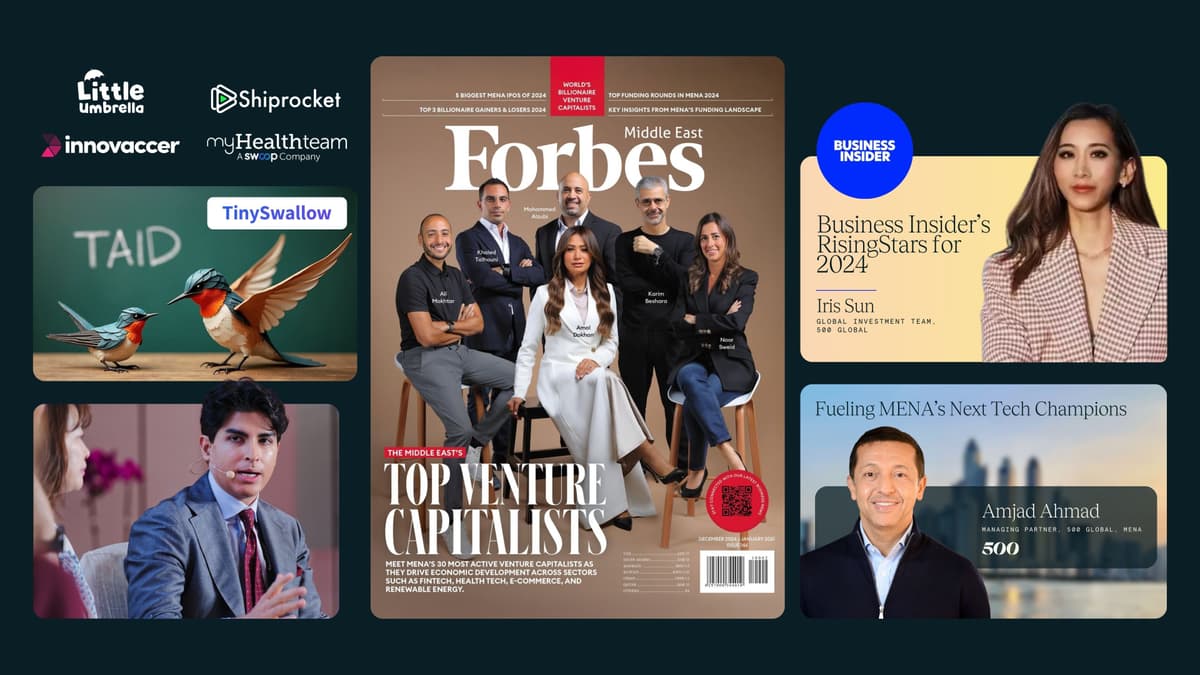The global supply chain disruption reminds us that much of the economy is built on physical goods. So, why is it that software companies get most of the technology industry’s attention?
2022.01.18

500 Global Team

Photo credit: Alexandre Debieve on Unsplash
Before Silicon Valley became known for software and internet services, it was a manufacturing powerhouse.
In the 1950s, ’60s, and ‘70s, semiconductor companies such as Fairchild Semiconductor and Intel turned Santa Clara County into a global hub for high-tech innovation. Today, the Bay Area is known for its concentration of software companies and startups to the point that many people I speak to have forgotten the technology innovation boom began with manufacturing.
The pandemic has reminded us that much of the economy is built on physical goods. The global supply chain disruption continues to ripple through the economy, with shortages of computer chips and other physical parts impacting companies large and small.
Manufacturing, materials, and other physical product companies make up the majority of the 20 sectors in the Fortune Global 500, as well as the majority of Fortune 500 companies. Hardly surprising, though, since most companies cannot exist without an underlying physical infrastructure. The Apples and Amazons wouldn’t be possible if it weren’t for materials. And some of the largest advertisers on social media companies are consumer goods companies, such as Coca Cola or Procter and Gamble.
So, why is it that software companies get most of the technology industry’s attention? Even the term “tech” itself has become synonymous with software companies. And why do “tech” investors tend to invest in software companies and not hardware?
Two myths feed this: the first is that materials companies are capital intensive. Second, is that there are no exits or success cases in materials startups.
The New Hardware Startup: Virtual ManufacturingA major shift for hardware startups is that they no longer need to own capital assets, they’re instead what is called a virtual manufacturing company. Twenty-first-century hardware startups take advantage of existing manufacturing equipment: hundreds of billions of dollars of existing industrial facilities. Software has gone through a similar shift with the move to cloud computing. The cloud makes it easy for any founder to get started without having to install or maintain physical servers. The days of mainframes and data centers and setting up your own server room are gone. Similarly, hardware startups don’t need to build their own factories. Instead they work with contract manufacturing partners. That allows small startups like mine with fewer than 10 employees to manufacture at cargo container volumes to fulfill national-scale orders.
For example, take a sustainable paper or bioplastics company. In the old model, companies spent a year or more building their own factories, hiring a large staff, and they were locked into whatever process and equipment that made sense on day one. Now, bioplastic, battery, or paper startups like mine have our patented “special sauce” added at an industrial partner facility.
We buy pallets of raw material ingredients made at paper mills or chemical plants the size of small cities. We work with industrial coaters and their specialized staff, gaining the flexibility to iterate on our product based on lean startup principles. At the same time, we get to work with manufacturing experts with decades of specialized expertise, as well as access to cost-optimized manufacturing that is already cost competitive and at large scale. Finally, third party logistics and warehousing companies handle moving the ingredients and final products to customers. No need to own a warehouse and loading dock.
Materials ExitsThe second myth about materials and hardware startups is that there aren’t any good exits. I’ve had plenty of startup investors tell me they can’t name a single materials exit. That’s because these companies aren’t typically consumer facing or software related, and don’t get perhaps the same coverage in tech publications such as TechCrunch. Instead they show up in trade magazines or the Wall Street Journal as mergers and acquisitions or sales to private equity (PE). Often materials companies are sold for undisclosed amounts to multi-billion dollar giants, but with names that aren’t known outside their industries. For example, Saint-Gobain has revenues larger than Netflix, and Solenis was recently acquired for $5.25 billion. They’re not household names, but then neither is PE firm Leonard Green’s $50B portfolio, which includes manufacturing companies.
Materials innovation also underlies several of the hot investment spaces, but not thought of as materials plays.
Plant-based meat is a perfect example. Its roots started in a laboratory in the 1970s leading to companies like Impossible Foods and Beyond Meat. Plant-based meat has now led to plant-based coffee creamers, eggless mayonnaise, and dozens of other plant-based substitutes based on materials innovations.
Another hot space is 3D printing–again, fundamentally a materials innovation story. More properly called additive manufacturing, it’s now moved well beyond industrial prototyping, from consumer products, such as eyewear to medical products from Formlabs.
The common theme among these companies is 21st century materials science solving 21st century macrotrends: healthier living, sustainability, and other consumer and business trends that apps cannot solve alone.
Guest Posts:
- NOTE: JONATHAN LEVINE IS A GUEST CONTRIBUTOR AND ANY VIEWS OR OPINIONS REPRESENTED IN THE ABOVE POST ARE PERSONAL AND DO NOT REPRESENT THOSE OF 500 GLOBAL OR ANY OF ITS STAFF OR AFFILIATES UNLESS EXPLICITLY STATED. ALL CONTENT REPRESENTED ABOVE IS PROVIDED FOR INFORMATIONAL PURPOSES ONLY. 500 GLOBAL MAKES NO REPRESENTATIONS AS TO THE ACCURACY OR COMPLETENESS OF ANY INFORMATION CONTAINED IN THE ABOVE POST. NO LIABILITY CAN BE ACCEPTED FOR ANY ERROR OR OMISSIONS. UNDER NO CIRCUMSTANCES SHOULD ANY OF THE ABOVE CONTENT BE CONSTRUED AS LEGAL, TAX OR INVESTMENT ADVICE FROM 500 GLOBAL OR ANY OF ITS AFFILIATES. 500 GLOBAL DOES NOT GUARANTEE ANY FUTURE RESULTS FOR ANY DECISIONS MADE BASED IN WHOLE OR IN PART ON THE CONTENT OR INFORMATION CONTAINED IN THIS POST.
- UNDER NO CIRCUMSTANCES SHOULD ANY INFORMATION OR CONTENT IN THIS POST, BE CONSIDERED AS AN OFFER TO SELL OR SOLICITATION OF INTEREST TO PURCHASE ANY SECURITIES ADVISED BY 500 STARTUPS OR ANY OF ITS AFFILIATES OR REPRESENTATIVES. UNDER NO CIRCUMSTANCES SHOULD ANYTHING HEREIN BE CONSTRUED AS FUND MARKETING MATERIALS BY PROSPECTIVE INVESTORS CONSIDERING AN INVESTMENT INTO ANY 500 GLOBAL INVESTMENT FUND.






